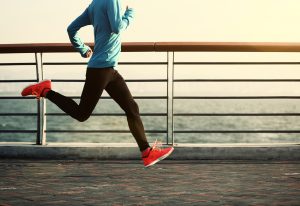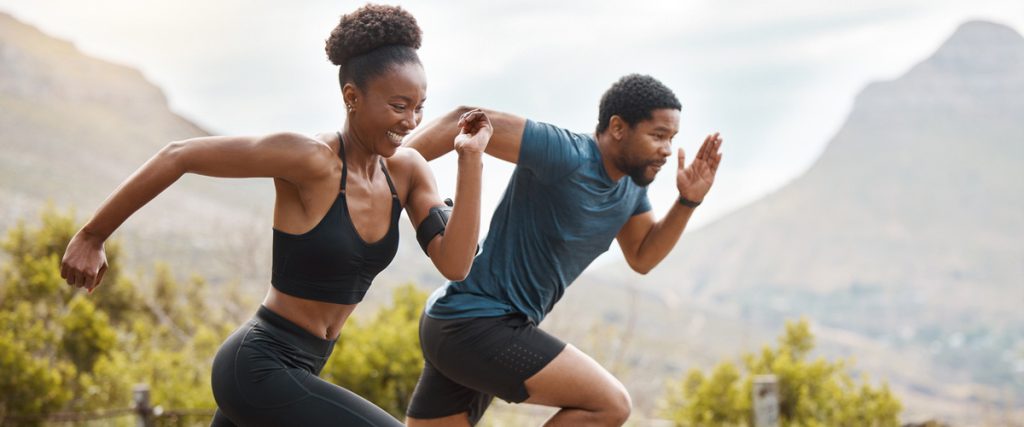 Winter is wrapping up, New Years resolutions are still holding on for dear life, and the summer body is in full throttle. During this time of year, thousands of men and women hit the road in order to prepare for the LA Marathon. Running is the easiest, cheapest and most efficient way to build cardiovascular endurance. But is running safe for muscles, tendons, bones and joints?
Winter is wrapping up, New Years resolutions are still holding on for dear life, and the summer body is in full throttle. During this time of year, thousands of men and women hit the road in order to prepare for the LA Marathon. Running is the easiest, cheapest and most efficient way to build cardiovascular endurance. But is running safe for muscles, tendons, bones and joints?It’s a popular belief that running is detrimental to cartilage health, and can lead to arthritis. In fact, research shows quite the opposite. A 2011 systematic review from the American College of Sports Medicine found that physical activity, including running, did not increase the risk of arthritis. Within that same review, a study from Sweden actually showed improvements in cartilage composition in runners! This is encouraging news for both avid, experienced runners, as well as the novice who is just trying to test the pavement.
Here are some helpful tips from Elevate to help you minimize injuries as you hit the open road:
1) “Everything is Good in Moderation”
While running has its benefits, doing too much too quickly can result in pain and injury. If you are a novice runner, start with shorter distances at a moderate pace (10-12 min miles), and consider a walk/run approach. The common rule of thumb is to increase your distance by 10% each week (If you are starting with 5 miles per week, the following week can be increased to 5.5 miles). Researchers found that a person who runs at a moderate pace for 30-45 mins, 3-4 times per week does not run a significant risk of cartilage damage or osteoarthritis. Moderation is the name of the game.
2) “Be Fit to Run, Don’t Run to Be Fit”
More than 70% of all runners will experience an injury that limits their function. Most of these injuries occur due to a poor foundation of strength and conditioning. Common injuries that runners experience include Iliotibial band syndrome, patellofemoral pain, patellar tendinitis, shin splints, or Achilles tendinitis. A big reason for these injuries is a lack of strength to meet the high demands of running. Common areas of weakness include the gluteal muscles, calves, and arch stabilizers of the foot.
Here are a few exercises from the Journal of Orthopedic and Sports Physical
Therapy to help prepare you for the road or trail. We will focus on some foundational hip extensor and abductor activation with the following 3
exercises.
Be sure to use proper form, and feel your posterior hip muscles turn on. Add
resistance bands at the thigh if necessary.
3) “Consider Your Shoes and Surface”
Footwear plays an important role in how the body absorbs shock. Make sure you wear a shoe that is conducive to your walking and running style. The number one variable should be comfort. If you don’t like the feel, you will hate it more when you run. Another variable is how your feet hit the ground. 75% of runners are heel strikers, 25% are mid foot or forefoot strikers. One pattern is not necessarily better than another. If you are serious about running, see a PT with experience helping runners. Knowing your strike pattern will provide insight into how you absorb force from the ground, and what is the best shoe for you. At Elevate, we utilize high-speed cameras and movement analysis software to uncover and correct faulty running mechanics leading to pain.
Surface needs to be taken into consideration as well. Harder surfaces create a large ground reaction force, which may place a higher load or stress through your joints and muscles. Start with running on softer surfaces, such as a flat grass field, or rubber track to decrease loading forces. Also consider that asphalt roads are harder than cement side walks. Trail running has is own perils due to the uneven terrain. This would be recommended for the most seasoned runner, as the incidence of ankle sprains rises significantly.
4) “Consider Your Current Fitness Status, and Injury History.”
Being overweight should not deter you from running, but here are a few things to
consider: According to a journal from the Computational Biomechanics of Medicine, with someone who is moderately overweight, there is around 40% greater pressure on the knees, hips and ankles during walking. With that in mind, during running, there can be anywhere from 2.5-8x a person’s body weight placed through the joint.
If you are someone who is looking to begin a weight loss program, consider shorter distances at slower speeds or the run/walk method, and allow ample recovery time (1-2 days in between runs). You can also consider other low impact exercises, like biking and swimming, to begin. As your body adapts, you will be able to increase both pace and mileage while minimizing injury risk.
The principles of moderation and strength building should be a top priority in order to run safely. If you are unsure about whether you should be running, come in to Elevate PT for a full movement evaluation, to help you get fit to run!
Neighmond, P. Put Those Shoes On: Running Won’t Kill Your Knees. National Public Radio: Your Health. Mar 28,
Urquhart DM, et al. What is the effect of physical activity on the knee joint? A systematic review. Med Sci in
Sports Med. 2011: 432-442.
Hinterwimmer S, et al. The effect of a six month training program followed by a marathon run on knee joint
cartilage volume and thickness in marathon beginners. Knee Surg Sports Trauma Arthr. 2014; 22:1353-1359.
Ramskov D, et al. High eccentric hip abduction strength reduces the risk of developing patellofemoral pain
among novice runners initiating a self-structured running program: A 1-year observational study. J Ortho Sports
Phys Ther. 2015; 45: 153-161.
Sanford BA, et al. Hip, knee, and ankle joint forces in healthy, overweight, and obese individuals during walking.
Comp Biomech for Med. 2014; 101-111.
 Winter is wrapping up, New Years resolutions are still holding on for dear life, and the summer body is in full throttle. During this time of year, thousands of men and women hit the road in order to prepare for the LA Marathon. Running is the easiest, cheapest and most efficient way to build cardiovascular endurance. But is running safe for muscles, tendons, bones and joints?
Winter is wrapping up, New Years resolutions are still holding on for dear life, and the summer body is in full throttle. During this time of year, thousands of men and women hit the road in order to prepare for the LA Marathon. Running is the easiest, cheapest and most efficient way to build cardiovascular endurance. But is running safe for muscles, tendons, bones and joints?
